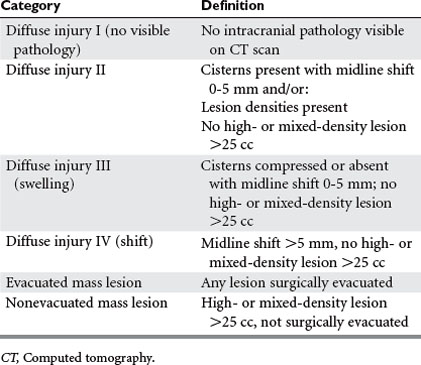CHAPTER 27 MAXILLOFACIAL INJURIES
While facial injuries may be dramatic in appearance, they are infrequently life threatening, and often not the most critical injuries the patient has sustained. Developing a systematic approach to the examination of patients with multiple wounds and prioritizing treatment is of paramount importance.
HISTORY AND PHYSICAL EXAM
The physical examination should proceed in a systematic and orderly fashion. Examination from superior or inferior is an acceptable pattern. No specific approach is preferred as long as the examiner is consistent. The face should be evaluated for symmetry and obvious deformity. All bony surfaces should be palpated to assess for step off, crepitus, or point tenderness. When examining the mandible and maxilla, broken or missing teeth should be noted, as well as jaw excursion. Normal excursion is 5–6 cm measured from the incisal edges of the incisors. Normal lateral movement of the mandible is 1 cm in relation to the maxilla. The patient’s occlusion should be documented. When evaluating soft tissue, any contusions, abrasions, or lacerations should be noted. An examination for occult injuries should be performed, including within the ear canal, nares, and oral cavity. A complete sensory and motor exam should also be conducted. Cranial nerves 2–12 are easily tested (Table 1).1
| Cranial Nerve | Test of Function |
|---|---|
| (II) Optic | Visual acuity |
| (III) Occulomotor | Evaluation of extraocular eye movements |
| (IV) Trochlear | |
| (VI) Abducens | |
| (V) Trigeminal | Test motor function by asking the person to clench his or her teeth while you palpate the masseter and temporal muscle for firmness. Test all three divisions of the trigeminal for intact sensation. |
| (VII) Facial | Test the facial nerve by asking the person to shut eyes, smile, and frown noting function and asymmetry. |
| (VIII) Vestibulocochlear | Test the cochlear portion of this cranial nerve by evaluating hearing acuity. |
| (IX) Glossopharyngeal | Test by checking for an intact gag reflex. |
| (X) Vagus | Look for symmetrical elevation of the soft palate. |
| (XI) Spinal accessory nerve | Have patient shrug shoulders against resistance. |
| (XII) Hypoglossal | Ask the person to stick out the tongue. Note symmetry, atrophy, and involuntary movements. |
SOFT TISSUE INJURIES
Local Anesthesia
Local anesthesia is the preferred modality for repair of most soft tissue injuries. While general anesthesia is required for major injuries, it is best avoided if possible since trauma patients may bear significant risks for aspiration, either due to intoxication or gastric contents. Local anesthesia can be combined with intravenous sedation to increase patient comfort and cooperation. Depending upon the choice of anesthetic, the effects of local anesthesia can last up to 7 hours (Table 2). When combined with epinephrine, the duration of anesthesia is extended and more importantly, the resultant vasoconstrictive effect provides increased hemostasis in the operative field. Onset of action is from 2 to 5 minutes for all drugs; however, waiting 7 minutes provides maximal effects.2
Antibiotics
The use of antibiotics depends on the location and mechanism of the facial injury. Most soft tissue injuries of the face can be prophylaxed with a first-generation cephalosporin or aminoglycoside in the case of penicillin allergic patients. In the case of animal or human bites, gram negative and anaerobic organism coverage should be provided. Wounds with intraoral involvement should also cover these organisms. Duration of treatment should be determined based upon the extent of injury, contamination, and immune status of the patient3 (Table 3).
| Immunization Status | Tetanus Toxoid (0.50 ml) | Tetanus Immunoglobulin |
|---|---|---|
| Unknown status or no history of immunization | Immediate dose plus two more at monthly intervals | One dose 250 IU |
| Last immunization greater than 5 years ago | One dose |








